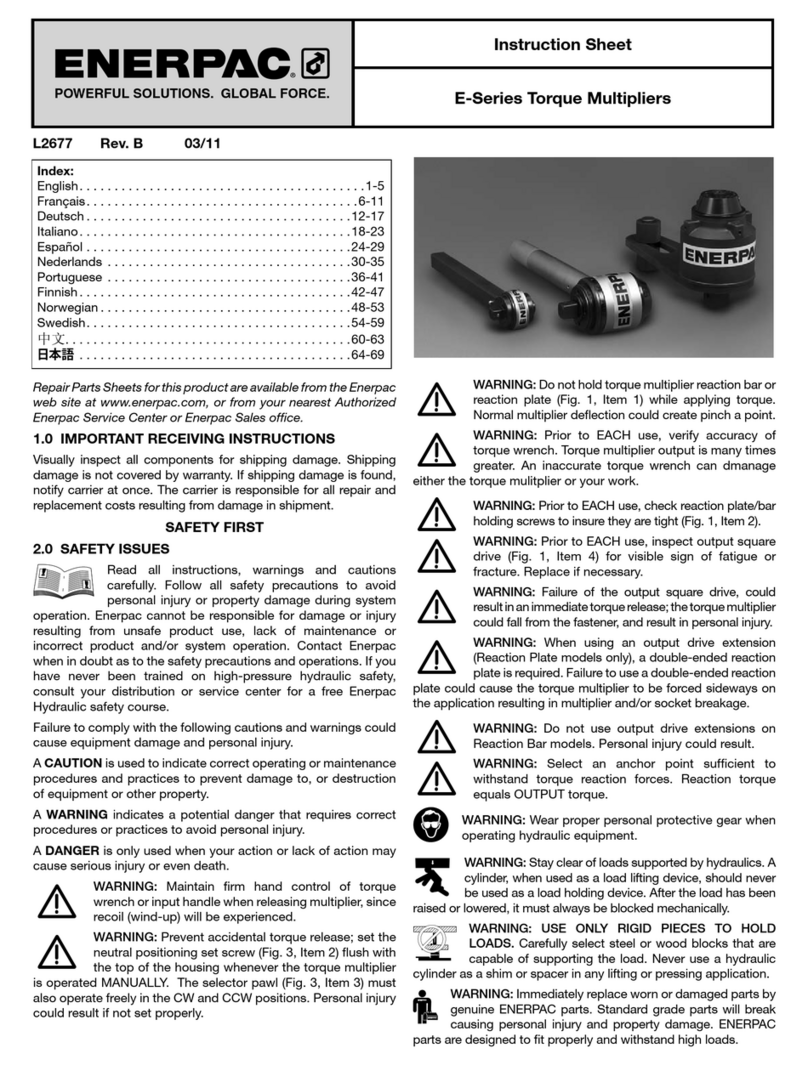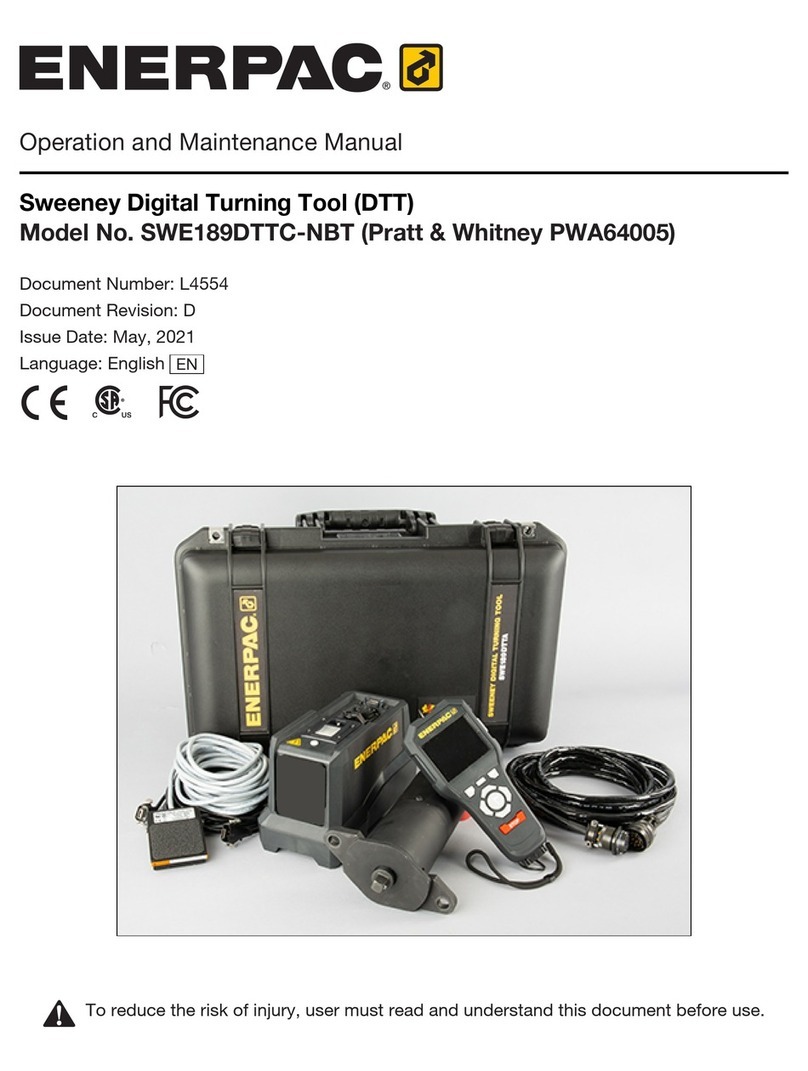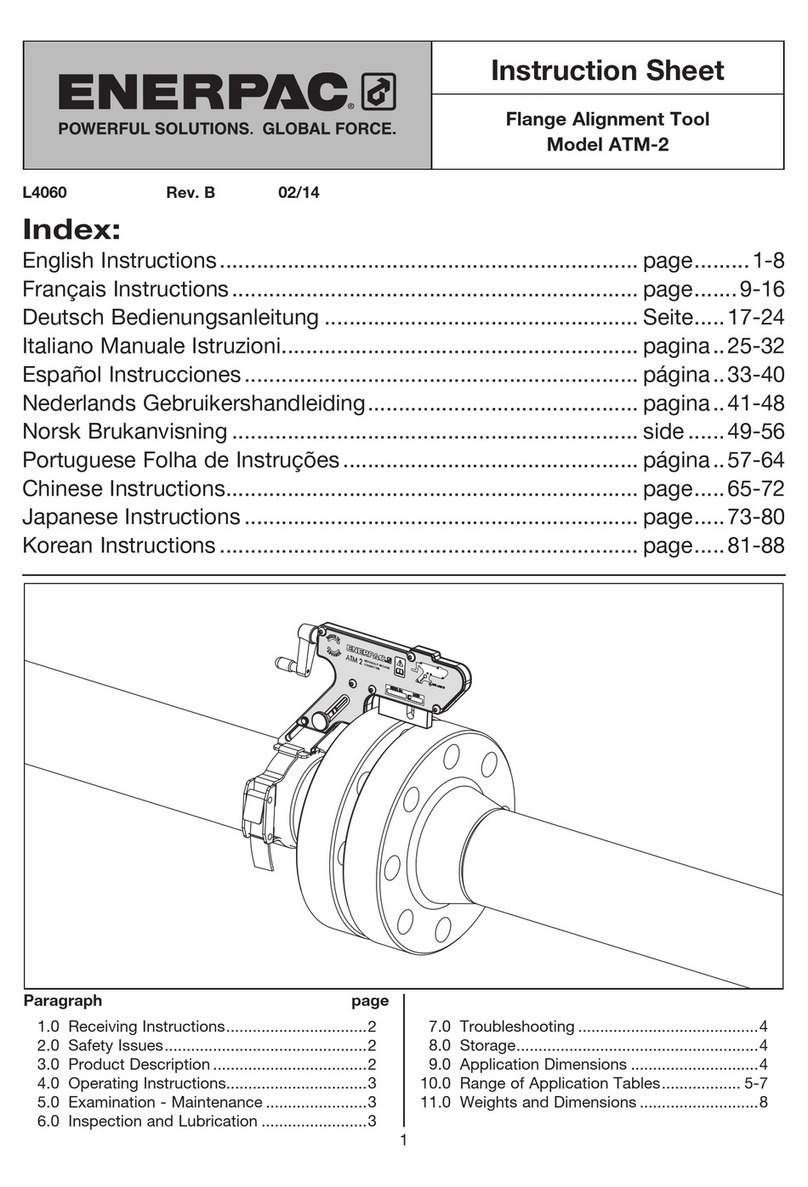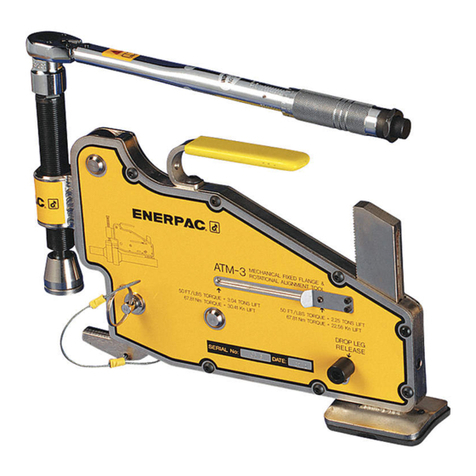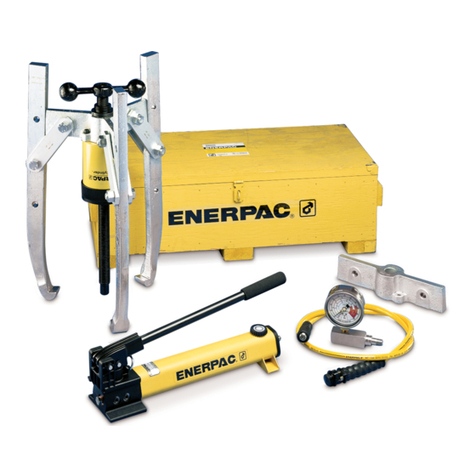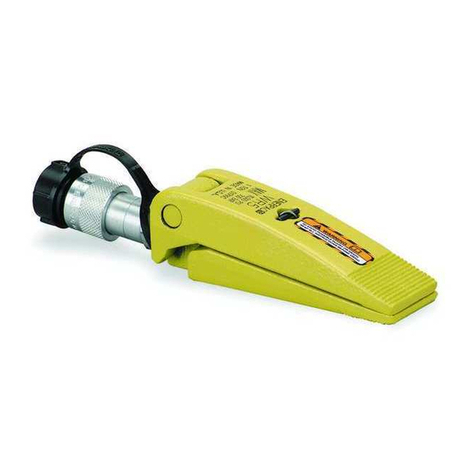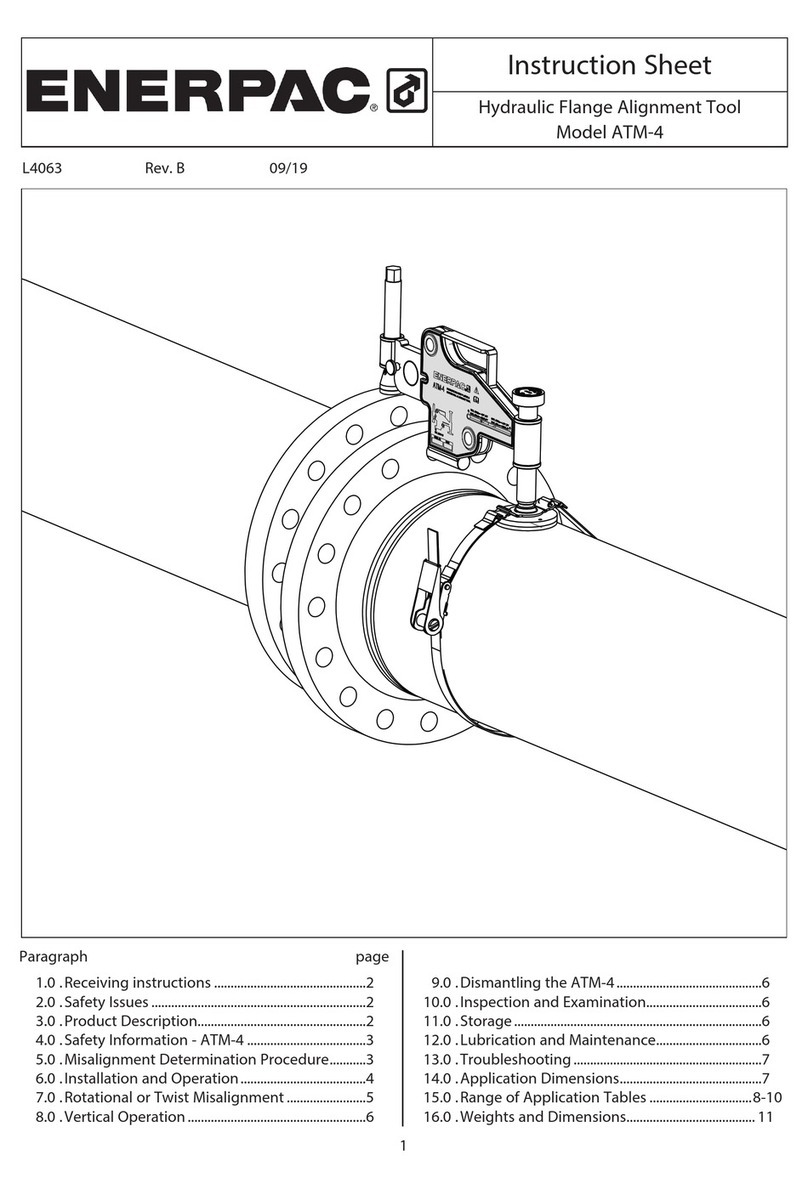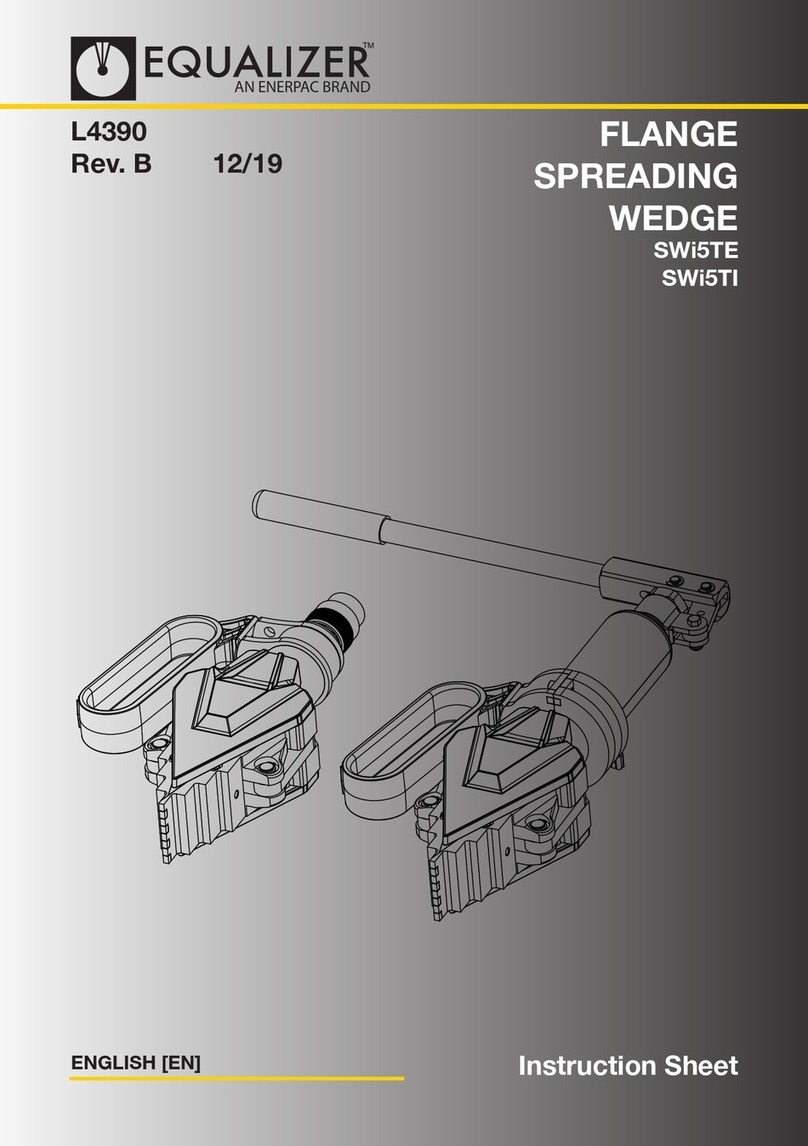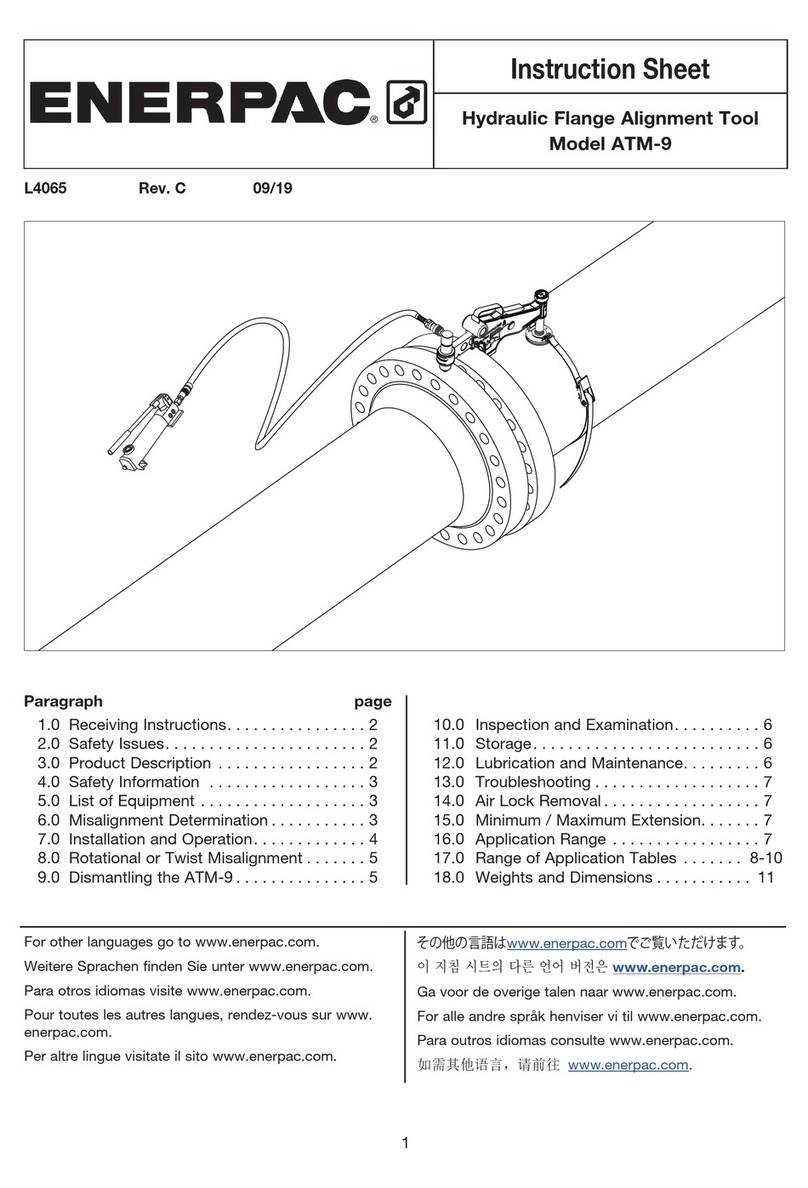
© 2019 Enerpac, All Rights Reserved. 7
6.
Be sure that all nuts and threaded pullers
are free running on the studs over the entire
stud length protruding through the joint.
7. Check that each stud is correctly installed
and that there is sucient stud extension
to engage the tensioner. The exposed
portion of the stud (above the nut) should
be at least the same dimension as the stud
diameter. The total protruding length of
the stud (from joint surface to end of stud)
must be at least twice the length of the
exposed portion of the stud. See Figure 5.
FIGURE 5, STUD EXTENSION REQUIREMENTS
6.2 Tensioner Installation and Hook-up
1. Refer to Section 6.1, Before You Begin.
All personnel to be involved in tensioning
procedures must read, understand and
follow the instructions contained in Section
6.1.
2. Determine the tensioner arrangement
around the joint surface. Refer to
Section 6.3 for examples and additional
information.
3. Before installing the first tensioner, be
sure
that the threaded portions of the stud
and threaded puller are clean and free of
damage.
4. Place the tensioner over the stud, ensuring
that the socket fits over the nut without
force. See Figure 6, View A.
a. Ensure that the tommy bar slot in the
bridge faces outward.
b. Ensure that the hydraulic couplers are
positioned outward, to allow easier
connection of hydraulic hoses.
Note: GT bridges and sockets manufactured
prior to 2019 and which have a Date Code
of A, will not have the socket captivation
feature. For GT Tensioners with a Date Code
of A, position the socket over the nut; ensure
that the socket fits over the nut without
force. Place the tensioner over the stud.
5. Locate the end of the stud with the
threaded
puller. Using a tommy bar, screw
down the threaded puller on the stud until
the puller shoulder seats firmly against the
piston. See Figure 6, View B.
6. Assemble any additional tensioners in the
system in the same manner, following
steps 3 through 6 of this section.
7. Check that the pump pressure release
valve
is OPEN. See Figure 6, View C.
8. Connect hydraulic hoses to the tensioners.
See Figure 6, views D and E. Also refer to
Section 6.3 for typical hose connection
arrangements.
9. At each stud, verify that the piston is
fully retracted into the tensioner body. If
necessary, turn down the threaded puller
(as required) to fully retract the piston.
10. Before pressurizing the system, be sure
that all hydraulic hoses are connected.
Each male coupler must be connected to
a corresponding female coupler. Verify that
each coupler is fully engaged and securely
locked into position by physically pulling
on the connection.
IMPORTANT: ONLY the unused female coupler
on the LAST tensioner at the end of the circuit
can remain disconnected. A blanking plug must
be installed in this coupler before beginning
pressurization.
Never pressurize the back side
of a disconnected (open ended) male coupler.
Disconnected male couplers may leak when
pressurized from the back side. Serious
personal injury could result if leakage occurs,
and a high pressure oil stream penetrates the
skin.
If only a single tensioner is being
used, always pressurize the tensioner using
ONLY the MALE tensioner coupler. To prevent
possible high pressure oil leakage, NEVER use
the female tensioner coupler to pressurize a
single tensioner.
WARNING
WARNING
